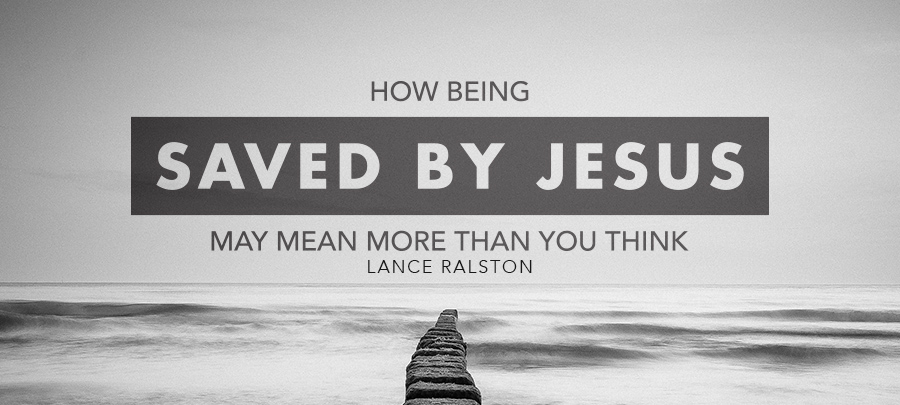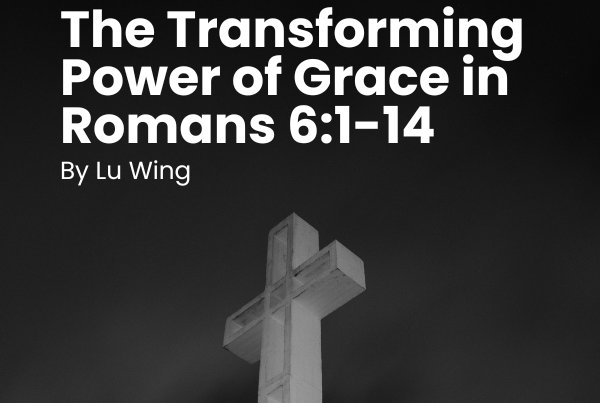
When the Great Schism took place in 1054, splitting the Church into East and West, the debate wasn’t just over who ought to lead the Church as it’s titular head, Roman Pope, or Eastern Patriarch. As East and West moved ever further apart, what had been a subtle difference in the doctrine of salvation became more pronounced.
In the Latin West, the work of Christ was seen in a primarily forensic or legal sense. Jesus died to pay the penalty for our sins. We owed a moral debt to God; Jesus paid it for us. A great exchange took place. Jesus took our sin and we were imputed with His righteousness. We now stand before God forgiven and justified.
In the Greek East, the work of Christ was understood as being mainly about restoration to God’s original plan for mankind. Yes, Jesus died for our sins, but that was preliminary to the real intent of salvation, which is to return us to what Adam & Eve were created for: an intimate partnership with God.
In the West, the emphasis was on the Cross and what we are saved FROM. In the East, the emphasis was on the Ascension, and what we are saved TO. It’s not that the West ignores what we’re saved to or that the East is oblivious to what we’re saved from. It’s where the emphasis is placed on what it means to be saved.
Protestant Evangelicals, of which the Calvary Chapel Movement is a part, owes its origin to a “back to the Bible” movement derived from a long-running call for reform of Roman Catholicism. The early Reformers were one-time Roman Catholics who early on in their careers as Reformers understood salvation mainly in its legal sense as forgiveness and justification.
As they followed through on the Reformation principle of Sola Scriptura and studied the Bible, they began to see New Testament revelation that salvation doesn’t just save a soul from hell for heaven.
Salvation ushers us into a life now marked by deliverance from the effects of sin so that we’re progressively made like Jesus Christ.
In 2 Peter, the Apostle writes . . .
2 Grace and peace be multiplied to you in the knowledge of God and of Jesus our Lord, 3 as His divine power has given to us all things that pertain to life and godliness, through the knowledge of Him who called us by glory and virtue, 4 by which have been given to us exceedingly great and precious promises, that through these you may be partakers of the divine nature, having escaped the corruption that is in the world through lust.
Romans 8:28 is a passage oft quoted to encourage hope and trust in the wisdom and power of God. What’s frequently omitted is the next verse, which tells us why God works all things for our good.
28 And we know that all things work together for good to those who love God, to those who are the called according to His purpose. 29 For whom He foreknew, He also predestined to be conformed to the image of His Son, that He might be the firstborn among many brethren.
Eternal life doesn’t begin the moment we die; it commences the instant we’re born again.
Everything is working together for the good of conforming us to the image of Christ. That’s happening now. Eternal life doesn’t begin the moment we die; it commences the instant we’re born again. Salvation is more than forgiveness of sin that ensures entrance into heaven. Yes, salvation is the forgiveness of sin that ensures entrance into heaven, but it’s also an entrance into a process by which the Holy Spirit applies the Grace and Truth of God to us now, and makes us more and more like Jesus.
In 2 Corinthians 3 the Apostle Paul wrote,
17 Now the Lord is the Spirit; and where the Spirit of the Lord is, there is liberty. 18 But we all, with unveiled face, beholding as in a mirror the glory of the Lord, are being transformed into the same image from glory to glory, just as by the Spirit of the Lord.
In Eastern Orthodoxy, this process of transformation is where the emphasis in salvation is placed. Sometimes referred to as theosis, it’s the process by which the believer is restored to what God originally intended human beings to be as divine image bearers. For sure, there have been times in the Eastern Church when the doctrine of theosis was taken too far and it was thought man could attain an almost god-like state. But officially, Orthodoxy understands the goal of salvation to be complete conformation of believers to the image of Christ.
As faithful New Testament followers of Jesus, we ought to reunite what was split asunder in the ancient East-West schism, and understand the work of Jesus not in an either/or, but in a both/and sense.
As faithful New Testament followers of Jesus, we ought to reunite what was split asunder in the ancient East-West schism, and understand the work of Jesus not in an either/or, but in a both/and sense. We were saved from sin and death to eternal life that embarks us on a journey toward the likeness of Christ commencing the moment we’re born again, and will be ultimately realized when we arrive in heaven.






